By Edwin Greenhalgh
May 2020
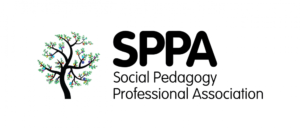
“The soul is placed in the body like a rough diamond and must be polished or the lustre of it will never appear” (Daniel Defoe)
Behind every diamond is a unique story…
This reflective blog shares my professional/personal journey into higher education from Bachelor of Arts (Hons) in Social Pedagogy, Advocacy and Participation to a Master of Arts in Social Pedagogy Leadership. I have two passions in my work life, the first being working alongside children and young people, with social pedagogy as a catalyst for change, to support their participation and advocate for their right to “shine” as valued members of their local community and wider society.
My second passion is to encourage more males into the care industry, creating a workforce more reflective of the  communities they serve. According to the latest statistics, only 2% of males are working in this sector. Denmark has the highest proportion of males in the childcare workforce.
communities they serve. According to the latest statistics, only 2% of males are working in this sector. Denmark has the highest proportion of males in the childcare workforce.
Let me start by pointing out that higher education, let alone a career working in the Early Years and Childcare sector, was something I had never considered. Back in the 1970s and struggling with dyslexia (a condition not recognised or diagnosed until halfway through my BA in 2018) my educational journey directed me down a practical route: I served an apprenticeship and worked as a carpenter and joiner until being made redundant in 1996 aged 34. This allowed me to explore my creativity, which I thoroughly enjoyed, and at that time it was considered to be an ‘appropriate’ career path for a young male.
Interestingly, research shows that men often felt dissuaded from taking up employment in the care sector at the point of leaving school. Instead, many, like myself take up care roles late in life after a period of work in more gender stereotypical roles or after a period of unemployment (Cameron, Moss and Owen 1999, p. 47).
 My interest and experience in the care sector came from being a father, a Venture Scout leader and after securing a job with the local authority as a Residential Childcare Worker in 1996. My journey with social pedagogy began in 2012, after eight days of training when the opportunity arose to be part of the EU Leonardo Mobility Project entitled ‘Social Pedagogy Learning in Practice’ in Copenhagen, Denmark, shadowing Social Pedagogues.
My interest and experience in the care sector came from being a father, a Venture Scout leader and after securing a job with the local authority as a Residential Childcare Worker in 1996. My journey with social pedagogy began in 2012, after eight days of training when the opportunity arose to be part of the EU Leonardo Mobility Project entitled ‘Social Pedagogy Learning in Practice’ in Copenhagen, Denmark, shadowing Social Pedagogues.
This proved an enlightening experience in that I could see how this profession could transform our practice in the UK. Social Pedagogy has proven to be a successful model in other countries already, for instance, according to the Thomas Coram Research Unit in Denmark, were social pedagogy provides the policy and professional educational framework for residential care, “young people do better than in similar institutions in England and the majority of the factors in accounting for the outcomes were the characteristics of the staff in their approach to practice”.

My only apprehension was, and still is, people’s reluctance to change which has been apparent when trying to introduce new and innovative ways of working. Having said that, the ideas I am about to discuss have had some positive outcomes, even though they are only in the early stages.
So, what is Social Pedagogy? And what has that got to do with polishing a diamond?
Social Pedagogy, originated from the Greek pais (child) and agein (to lead, to guide). Well established in Europe it is a holistic and relationship-centred approach to working in care and education settings, in my case with children and young people, but not limited to. It evolved from a rich history of social thinkers, educational philosophers and concerned practitioners wanting to create a more just society. This academic discipline draws on key theories such as sociology, psychology and philosophy when addressing social inequalities, facilitating and nurturing connections at an individual and community level through education.
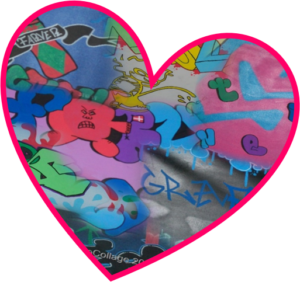 Building holistic relationships within the team, including other professionals, arguably is where our work begins. Social Pedagogy is not so much about what we do, but how we do it. As leaders we need to encourage innovation and creativity to support holistic learning and understanding in everyday social situations, in order to develop through positive experiences and gain a sense of our own potential, feeling empowered.
Building holistic relationships within the team, including other professionals, arguably is where our work begins. Social Pedagogy is not so much about what we do, but how we do it. As leaders we need to encourage innovation and creativity to support holistic learning and understanding in everyday social situations, in order to develop through positive experiences and gain a sense of our own potential, feeling empowered.
The Diamond model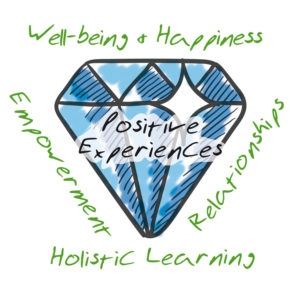
The Diamond model (Eichsteller& Holthoff, 2011) provides an ethical framework to practise the foundation principles that underpin the core aims of the social pedagogue: well-being and happiness, relationships, holistic learning and empowerment. The diamond symbolises the recognition that as human beings we are all unique with intrinsic potential (if polished).
Haltung
‘If one is truly to SUCCEED in leading a person to a specific place, one must first and foremost, take CARE to find him where he is and BEGIN there.’ (Soren Kierkegaard)
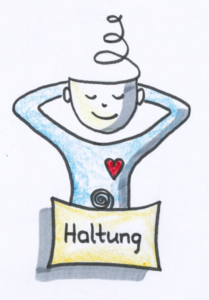
‘Haltung’ a German term that roughly translates as ethos, mindset, or attitude; therefore, it is how our moral convictions guide our actions (Eichsteller, 2010). Haltung enables us to find the person where they begin. This deep understanding and regard for an individual sets our starting point in the relationship. An understanding of Hermeneutics recognises that there are many different constructions of reality, not just one. Individuals’ understandings how they perceive the world around them are based on their experiences and can only be understood in their social context. If we fail to understand their reality, we are of little help to them.
Taking an example from practice, imagine you are working with a young person who is autistic, nonverbal and their needs are expressed in behaviour considered to be challenging or even violent. The starting point is to recognise that all behaviour is a form of communication and understanding the individual’s communication is our place to start. The mind map below provides an example tool of identifying, recording, and analysing an individual’s communication needs and the starting point for guiding our interactions.
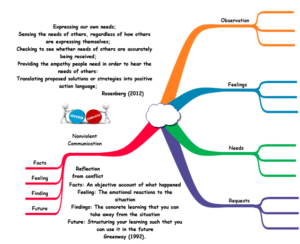
This enables us to build compassionate relationships through mutual respect of language, strengthening the psychological safety, happiness, and well-being of ourselves and those we support. Taking time to understand the individual in this way enables us to engage in nonviolent communication.
Diamond polishers want to help children shine! 


